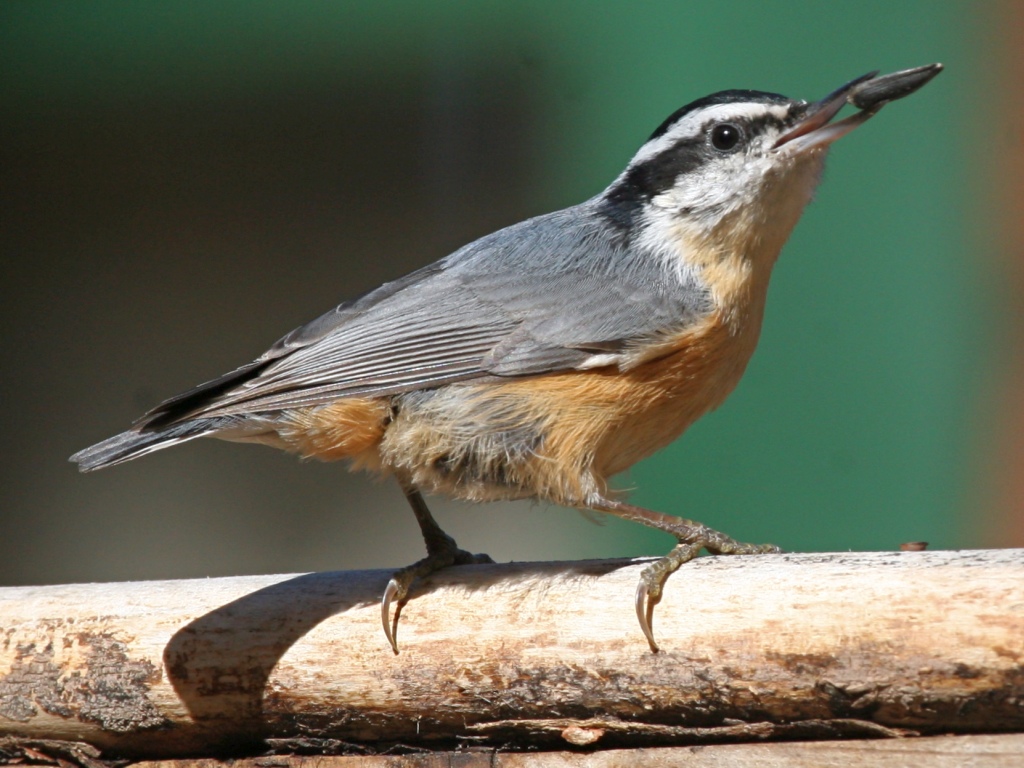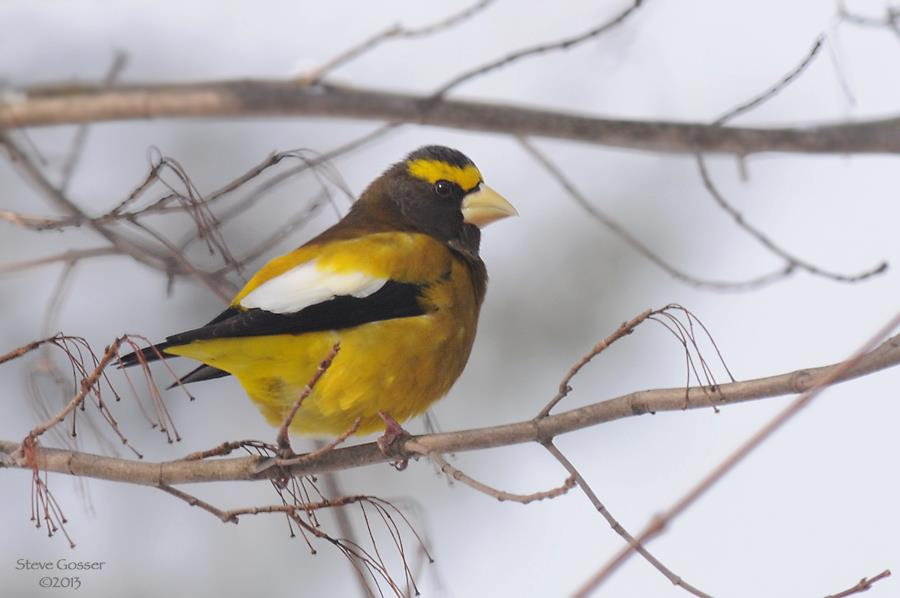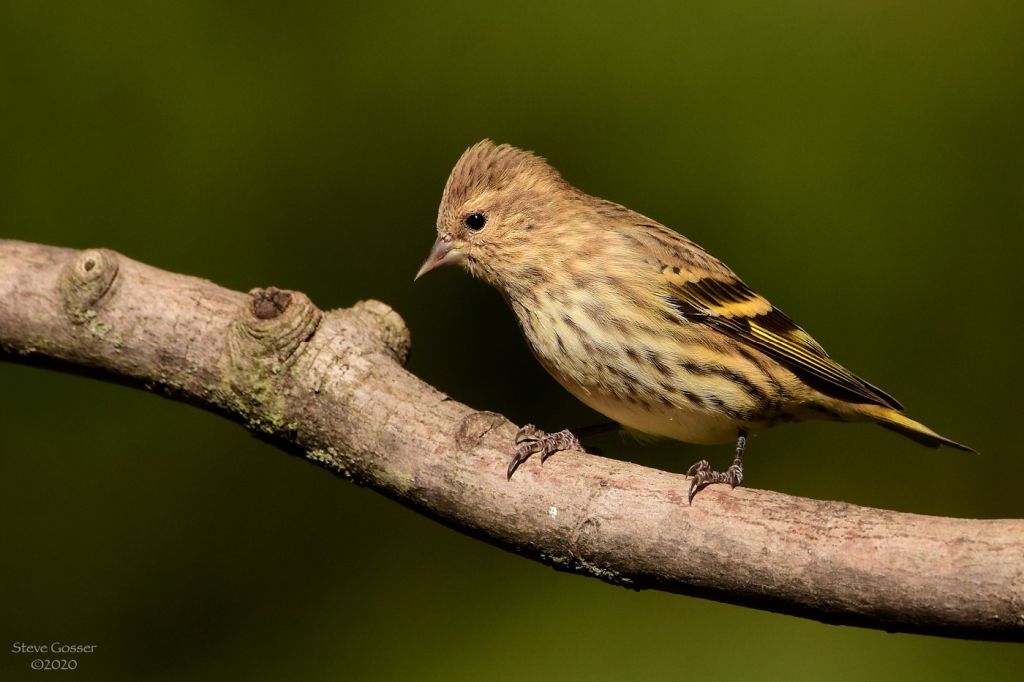
21 September 2020
According to this year’s Winter Finch Forecast we should expect red-breasted nuthatches and two winter finch species in Pennsylvania this winter.
The Winter Finch Forecast is an annual tradition founded by Ron Pittaway and carried on by Tyler Hoar. Combining information on bird movement and food availability in northern Canada, it predicts whether finches and three other species(*) will bother to leave their northern homes this winter. The birds only irrupt into southern Canada and the U.S. if the cone and seed crop is low. (* red-breasted nuthatches, blue jays, bohemian waxwings)
Red-breasted nuthatches (Sitta canadensis) began leaving Canada in mid-August and the vanguard is here, as you can see by these eBird sightings in Allegheny County, 1 Aug through 20 Sep. Offer black oil sunflower seeds, peanuts and suet if you want to see them at your feeders.

The forecast says that most purple finches (Haemorhous purpureus) will leave Canada this winter and some are already on the move. They’ve been seen at least 10 times in Allegheny County since August 1.
Be careful when you identify a purple finch as it closely resembles the house finches we see every day. Female purple finches have sharp brown stripes compared to blurry gray-brown on female house finches. Male purple finches are rosy-purple as if dipped head first in berry juice. They have rosy flank stripes, not brown. Check out this guide for telling the difference between Purple and House finches.

The forecast also says that evening grosbeaks (Coccothraustes vespertinus) are now moving south in the highest numbers seen in 25 years. These coniferous woodland finches are expected to come to Pennsylvania but they prefer the forest so don’t expect to see them unless you’re near a woodlot. If you live in suitable habitat, they’ll come to your feeder for black oil sunflower seeds.

Remember this sound and you’ll hear them coming.
And finally, the forecast for pine siskins (Spinus pinus) is mediocre but Steve Gosser has already seen one in his Allegheny County backyard last Saturday. Listen for their chatter and distinctive zipper sound and you’ll know they’re here. They like nyger seed just like goldfinches.

Check out the Winter Finch Forecast 2020-2021 to learn more and find out what Canada’s blue jays are up to.
p.s. You can learn where a particular species is within a particular timeframe by going here to explore eBird. Choose species, then date range, then location.
(photos by Chuck Tague, Brian Herman and Steve Gosser. screenshot of eBird red-breasted nuthatch sightings)
I saw a red breasted nuthatch just the other day in Weirton!
We live in Carroll County Maryland. I started loading up the bird feeders about two weeks ago. Last weekend I began seeing these birds that I’ve never seen before. The prominent white eyebrow and long bill and colored breast was striking. It was feeding on the suet and the seed which also contains mealworms. Turns out there are at least two Red Breasted Nuthatches (Sitta canadensis) present. I’ve witnessed them again yesterday. It’s great having new additions!
PA
Master Naturalist student
I have at least 2 red breasted nuthatches at my feeders for the last week or so. I am wondering If I saw a pine siskin today. I thought it was a pale molting juvenile goldfinch. I haven’t seen a pine siskin since the irruption several years ago.
Hi. I live in southern Allegheny County. I’ve been watching local birds this summer–mostly crows, hawks, blue jays, pigeons, & robins. The second week in October, I was reading when a bird flew over my porch. Calling out twice during that flight, the bird sounded exactly as if it had swallowed a squeaky toy. I checked online to listen to audio recordings & the Brown-headed Nuthatch seemed the best match. Is this possible? I’ve never heard this call before, nor have I again since last week. I did not get a look at the bird.
If the Brown-headed Nuthatch can be found in MD & considering climate change, I suppose it’s not far-fetched that this bird could be in PA during the warmest months.
Elizabeth, a brown-headed nuthatch is extremely unlikely. They don’t migrate, they don’t live in or cross the Appalachians and the furthest north go is the coast of Maryland, not the interior.
That said, maybe you heard a pine siskin. Here are two vocal pine siskins (with other birds in background including white-crowned sparrow): https://www.xeno-canto.org/574660